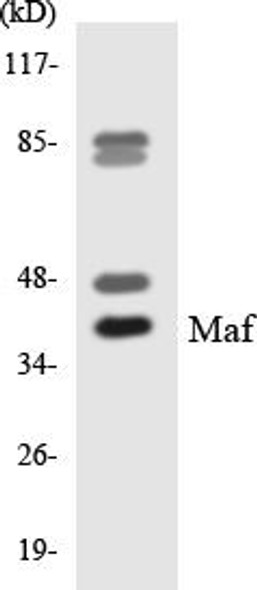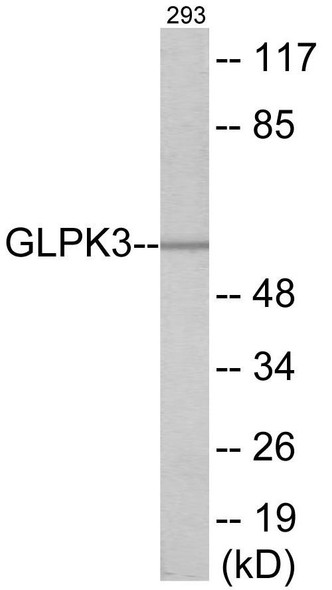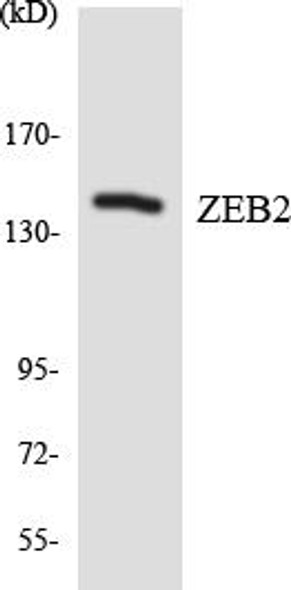KAP1 Colorimetric Cell-Based ELISA
- SKU:
- CBCAB01000
- Product Type:
- ELISA Kit
- ELISA Type:
- Cell Based
- Reactivity:
- Human
- Mouse
- Rat
- Detection Method:
- Colorimetric
Description
KAP1 Colorimetric Cell-Based ELISA
The KAP1 Colorimetric Cell-Based ELISA Kit is a cutting-edge tool for researchers looking to accurately quantify the levels of specific proteins in cell cultures. This kit offers high sensitivity and specificity, guaranteeing reliable and reproducible results for a variety of research applications.Utilizing a colorimetric detection method, the KAP1 Kit is easy to use and provides rapid results, allowing for efficient analysis of protein expression levels. This kit is compatible with a range of cell types and can detect multiple proteins simultaneously, making it versatile and adaptable to various research needs.
With its ability to measure protein levels in cell-based assays, the KAP1 Colorimetric Cell-Based ELISA Kit is an invaluable tool for investigating cellular processes, drug discovery, and biomarker identification. Whether studying protein interactions, signaling pathways, or drug effects, this kit provides a comprehensive solution for researchers seeking to gain deeper insights into cell biology.
| Product Name: | KAP1 Colorimetric Cell-Based ELISA |
| Product Code: | CBCAB01000 |
| ELISA Type: | Cell-Based |
| Target: | KAP1 |
| Reactivity: | Human, Mouse, Rat |
| Dynamic Range: | > 5000 Cells |
| Detection Method: | Colorimetric 450 nmStorage/Stability:4°C/6 Months |
| Format: | 96-Well Microplate |
The KAP1 Colorimetric Cell-Based ELISA Kit is a convenient, lysate-free, high throughput and sensitive assay kit that can detect KAP1 protein expression profile in cells. The kit can be used for measuring the relative amounts of KAP1 in cultured cells as well as screening for the effects that various treatments, inhibitors (ie siRNA or chemicals), or activators have on KAP1.
Qualitative determination of KAP1 concentration is achieved by an indirect ELISA format. In essence, KAP1 is captured by KAP1-specific primary antibodies while the HRP-conjugated secondary antibodies bind the Fc region of the primary antibody. Through this binding, the HRP enzyme conjugated to the secondary antibody can catalyze a colorimetric reaction upon substrate addition. Due to the qualitative nature of the Cell-Based ELISA, multiple normalization methods are needed:
| 1. | A monoclonal antibody specific for human GAPDH is included to serve as an internal positive control in normalizing the target absorbance values. |
| 2. | Following the colorimetric measurement of HRP activity via substrate addition, the Crystal Violet whole-cell staining method may be used to determine cell density. After staining, the results can be analysed by normalizing the absorbance values to cell amounts, by which the plating difference can be adjusted. |
| Database Information: | Gene ID: 5575, UniProt ID: P31321, OMIM: 176911, Unigene: Hs.520851 |
| Gene Symbol: | PRKAR1B |
| Sub Type: | None |
| UniProt Protein Function: | PKAR1B: Regulatory subunit of the cAMP-dependent protein kinases involved in cAMP signaling in cells. The inactive holoenzyme is composed of two regulatory chains and two catalytic chains. Activation by cAMP releases the two active catalytic monomers and the regulatory dimer. Interacts with PRKX; regulates this cAMP-dependent protein kinase. Four types of regulatory chains are found: I- alpha, I-beta, II-alpha, and II-beta. Their expression varies among tissues and is in some cases constitutive and in others inducible. Belongs to the cAMP-dependent kinase regulatory chain family. |
| UniProt Protein Details: | Protein type:Protein kinase, regulatory subunit Chromosomal Location of Human Ortholog: 7p22 Cellular Component: cytosol Molecular Function:cAMP-dependent protein kinase inhibitor activity; cAMP-dependent protein kinase regulator activity Biological Process: activation of protein kinase A; blood coagulation; renal water homeostasis |
| NCBI Summary: | The protein encoded by this gene is a regulatory subunit of cyclic AMP-dependent protein kinase A (PKA), which is involved in the signaling pathway of the second messenger cAMP. Two regulatory and two catalytic subunits form the PKA holoenzyme, disbands after cAMP binding. The holoenzyme is involved in many cellular events, including ion transport, metabolism, and transcription. Several transcript variants encoding the same protein have been found for this gene. [provided by RefSeq, Aug 2015] |
| UniProt Code: | P31321 |
| NCBI GenInfo Identifier: | 229463042 |
| NCBI Gene ID: | 5575 |
| NCBI Accession: | P31321.4 |
| UniProt Secondary Accession: | P31321,Q8N422, |
| UniProt Related Accession: | P31321 |
| Molecular Weight: | 43,073 Da |
| NCBI Full Name: | cAMP-dependent protein kinase type I-beta regulatory subunit |
| NCBI Synonym Full Names: | protein kinase cAMP-dependent type I regulatory subunit beta |
| NCBI Official Symbol: | PRKAR1B |
| NCBI Official Synonym Symbols: | PRKAR1 |
| NCBI Protein Information: | cAMP-dependent protein kinase type I-beta regulatory subunit |
| UniProt Protein Name: | cAMP-dependent protein kinase type I-beta regulatory subunit |
| Protein Family: | cAMP-dependent protein kinase |
| UniProt Gene Name: | PRKAR1B |
| UniProt Entry Name: | KAP1_HUMAN |
| Component | Quantity |
| 96-Well Cell Culture Clear-Bottom Microplate | 2 plates |
| 10X TBS | 24 mL |
| Quenching Buffer | 24 mL |
| Blocking Buffer | 50 mL |
| 15X Wash Buffer | 50 mL |
| Primary Antibody Diluent | 12 mL |
| 100x Anti-Phospho Target Antibody | 60 µL |
| 100x Anti-Target Antibody | 60 µL |
| Anti-GAPDH Antibody | 60 µL |
| HRP-Conjugated Anti-Rabbit IgG Antibody | 12 mL |
| HRP-Conjugated Anti-Mouse IgG Antibody | 12 mL |
| SDS Solution | 12 mL |
| Stop Solution | 24 mL |
| Ready-to-Use Substrate | 12 mL |
| Crystal Violet Solution | 12 mL |
| Adhesive Plate Seals | 2 seals |
The following materials and/or equipment are NOT provided in this kit but are necessary to successfully conduct the experiment:
- Microplate reader able to measure absorbance at 450 nm and/or 595 nm for Crystal Violet Cell Staining (Optional)
- Micropipettes with capability of measuring volumes ranging from 1 µL to 1 ml
- 37% formaldehyde (Sigma Cat# F-8775) or formaldehyde from other sources
- Squirt bottle, manifold dispenser, multichannel pipette reservoir or automated microplate washer
- Graph paper or computer software capable of generating or displaying logarithmic functions
- Absorbent papers or vacuum aspirator
- Test tubes or microfuge tubes capable of storing ≥1 ml
- Poly-L-Lysine (Sigma Cat# P4832 for suspension cells)
- Orbital shaker (optional)
- Deionized or sterile water
*Note: Protocols are specific to each batch/lot. For the correct instructions please follow the protocol included in your kit.
| Step | Procedure |
| 1. | Seed 200 µL of 20,000 adherent cells in culture medium in each well of a 96-well plate. The plates included in the kit are sterile and treated for cell culture. For suspension cells and loosely attached cells, coat the plates with 100 µL of 10 µg/ml Poly-L-Lysine (not included) to each well of a 96-well plate for 30 minutes at 37°C prior to adding cells. |
| 2. | Incubate the cells for overnight at 37°C, 5% CO2. |
| 3. | Treat the cells as desired. |
| 4. | Remove the cell culture medium and rinse with 200 µL of 1x TBS, twice. |
| 5. | Fix the cells by incubating with 100 µL of Fixing Solution for 20 minutes at room temperature. The 4% formaldehyde is used for adherent cells and 8% formaldehyde is used for suspension cells and loosely attached cells. |
| 6. | Remove the Fixing Solution and wash the plate 3 times with 200 µL 1x Wash Buffer for five minutes each time with gentle shaking on the orbital shaker. The plate can be stored at 4°C for a week. |
| 7. | Add 100 µL of Quenching Buffer and incubate for 20 minutes at room temperature. |
| 8. | Wash the plate 3 times with 1x Wash Buffer for 5 minutes each time. |
| 9. | Add 200 µL of Blocking Buffer and incubate for 1 hour at room temperature. |
| 10. | Wash 3 times with 200 µL of 1x Wash Buffer for 5 minutes each time. |
| 11. | Add 50 µL of 1x primary antibodies (Anti-KAP1 Antibody and/or Anti-GAPDH Antibody) to the corresponding wells, cover with Parafilm and incubate for 16 hours (overnight) at 4°C. If the target expression is known to be high, incubate for 2 hours at room temperature. |
| 12. | Wash 3 times with 200 µL of 1x Wash Buffer for 5 minutes each time. |
| 13. | Add 50 µL of 1x secondary antibodies (HRP-Conjugated AntiRabbit IgG Antibody or HRP-Conjugated Anti-Mouse IgG Antibody) to corresponding wells and incubate for 1.5 hours at room temperature. |
| 14. | Wash 3 times with 200 µL of 1x Wash Buffer for 5 minutes each time. |
| 15. | Add 50 µL of Ready-to-Use Substrate to each well and incubate for 30 minutes at room temperature in the dark. |
| 16. | Add 50 µL of Stop Solution to each well and read OD at 450 nm immediately using the microplate reader. |
(Additional Crystal Violet staining may be performed if desired – details of this may be found in the kit technical manual.)










